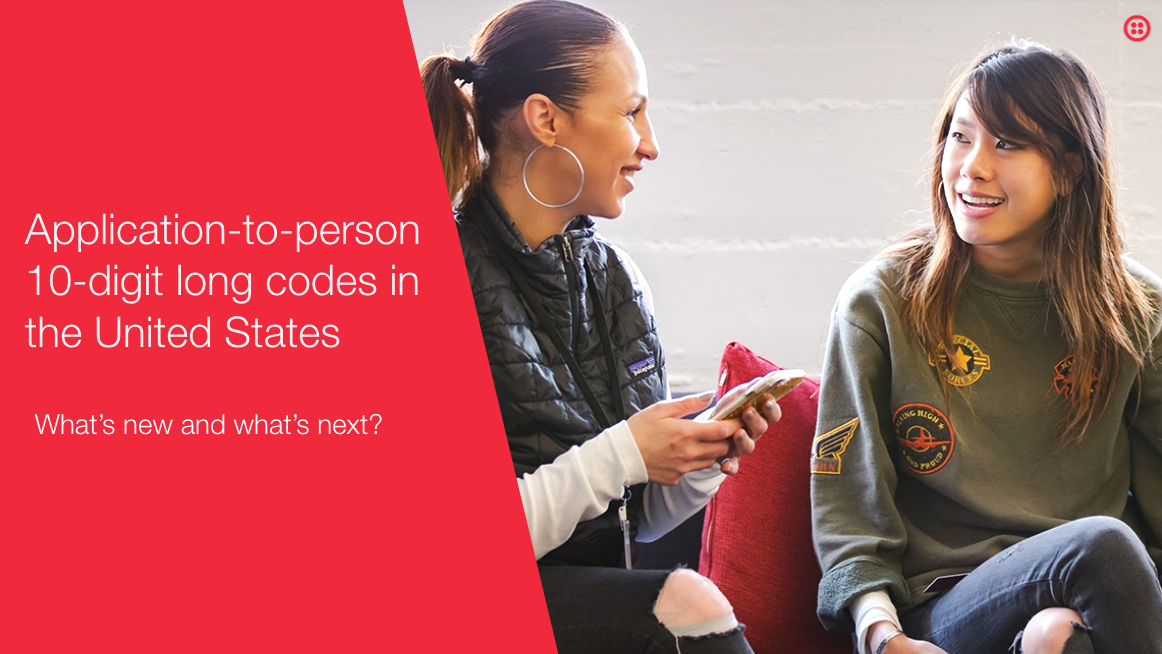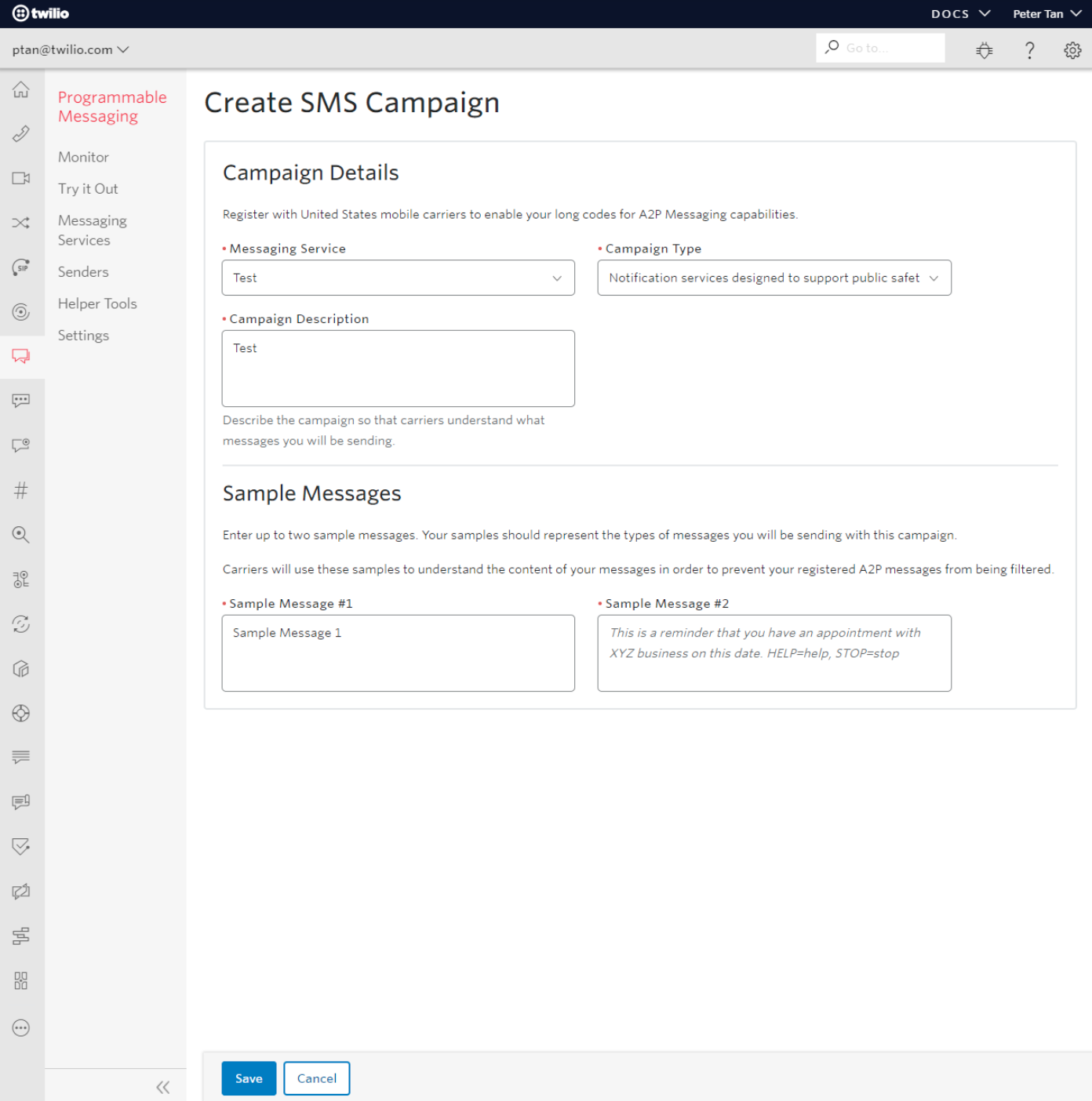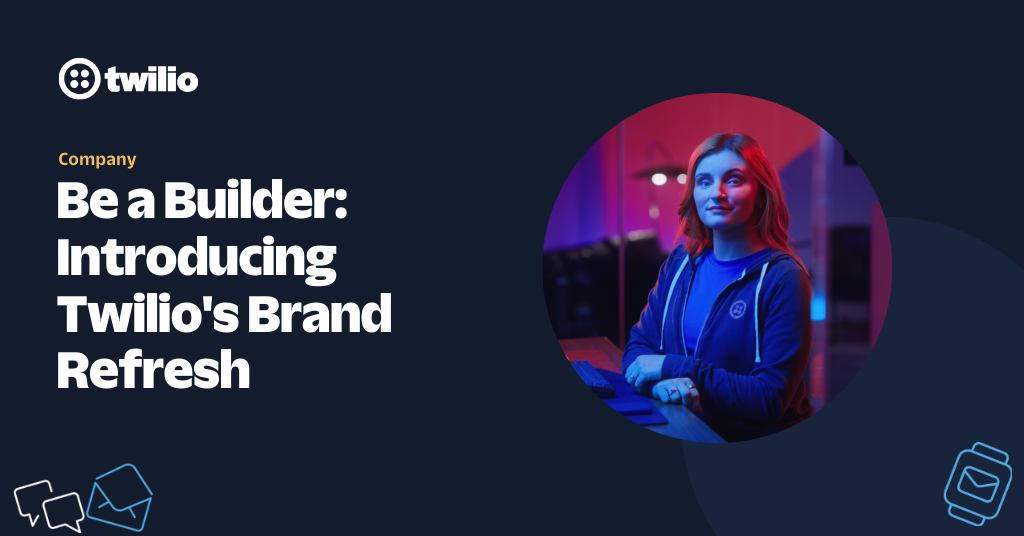What's new with A2P 10DLC?
Time to read: 4 minutes

[For the most up-to-date information on A2P 10DLC, check out "What is A2P 10DLC?"]
In February, we shared an exciting update when Verizon became the first carrier to launch their A2P 10-digit long code (10DLC) service for SMS & MMS. In that update, we provided a brief history of A2P (application-to-person) messaging and what could be expected moving forward. As we look towards 2021, questions remain around the timing of full ecosystem adoption, what processes and requirements may change, and the impact on deliverability and throughput.
It’s best to think of the A2P 10DLC changes in two main categories: (1) Routes, and (2) Registration. However, while these category breakdowns are important (and are discussed in detail below), we advise our customers to look at the A2P 10DLC ecosystem holistically. The fact is that it is impractical to know each end user’s carrier, so it’s impossible to build a strategy around one specific carrier requirement or update. Rather, it’s important to look at each of these categories across the entire ecosystem of carriers in order to make an informed decision for your messaging strategy.
A2P 10DLC Routes
First, let’s define the distinction between P2P (person-to-person) and A2P (application-to-person) messaging. For simplicity, P2P messaging is communication between consumers (i.e. you texting with a friend) and A2P messaging is communication between non-consumers and consumers (i.e. order notifications from your favorite delivery app), meaning it’s traversing a platform that provides automation. You can learn more about the definitions in the CTIA’s Messaging Principles and Best Practices.
Why is this important? Carriers are creating 10-digit long code routes specifically for A2P traffic in an effort to improve deliverability and throughput for good actors while protecting end users from spam and unwanted messages. Once all A2P 10DLC routes are live, we anticipate four changes:
- Additional fees on A2P 10DLC routes, as already seen by Verizon.
- While it hasn’t been fully enforced yet, carriers will more heavily filter messages from businesses who are not following the requirements to utilize A2P 10-digit long codes. At the same time, good-use customers utilizing A2P 10DLC should see a reduction in filtering. Requirements include brand and campaign registration (more details on that below).
- Shared short codes will be fully deprecated, requiring businesses to decide on using dedicated short codes, toll-free numbers, or A2P 10-digit long codes.
- Increased throughput with 10-digit long codes. While additional throughput will become available to senders, the ecosystem is yet to converge on a standard to meter said throughput. As a result, Twilio will continue to standardize at 1 MPS per long code until we can guarantee a consistent experience with the new offering.
Here is the status of routes for A2P 10DLC (details are subject to change):
- Verizon: Routes have been live since January 2020. Carrier fees are $0.0025 on SMS and $0.005 for MMS.
- AT&T: Currently, AT&T has made routes available in beta. If you’re interested in the beta, please reach out to your Twilio point of contact. There will not be fees during the beta phase, but we expect them to be added at the end of Q1 2021.
- New T-Mobile: New T-Mobile (previously T-Mobile & Sprint) has made routes available in beta. We expect fees to be added toward the end of Q1 2021.
A2P 10DLC Registration
As AT&T brings their A2P 10DLC route live, there is an added focus on having businesses identify who they are to the carrier networks and what messages they are sending across the network. While this is not currently required for Verizon, we expect broader ecosystem adoption and, as noted earlier, it’s critical to build your strategy to accommodate all carrier needs.
Why is registration important? Two reasons: filtering and throughput. The registration process allows businesses to build trust with carriers, gain better deliverability, and carriers to more effectively identify unwanted messages and bad actors. As a result, businesses will immediately benefit from decreased filtering. Longer term, we anticipate carriers allowing for standardized increased throughput depending on the use case. So, let’s take a look at what registration entails:
- Who: Brand Registration (projected to be a $4 one-time fee, but has yet to be finalized and is subject to change) - This will require specific information about brands who want to send messages over A2P 10DLC routes. Based on the information provided, the brand will be assigned a Trust Score that assigns the level of risk believed the company poses to the ecosystem. Although the details are not yet finalized, this Trust Score is projected to have three main tiers - low, medium, or higher risk brands. The score a brand receives will help dictate the throughput and amount of messages that they are able to send.
- What: Campaign Registration (projected to be $5 - $10 per month, but has yet to be finalized and is subject to change) - This will require selecting a use case, providing a description, and including sample messages for each campaign. It’s anticipated that use cases like account notifications will be quickly approved while more sensitive use cases, like emergency alerts, will require additional vetting. We will provide additional details as this distinction is standardized.
How Does Registration Work?
Clearly, there is a lot of ecosystem change coming and we know these requirements can be daunting. Twilio’s focus is to simplify the process of getting verified and to make it easier for you to earn trust with the carriers. That’s why we’ve built the Trust Hub, allowing you to add and manage all the information you need for brand and campaign registration.
Twilio’s Trust Hub integrates with the 3rd party system, The Campaign Registry (TCR), utilized by carriers to conduct the vetting for brand and campaign registration. Within the Console experience, you can register your business as a Customer Profile, register an SMS Campaign, and attach it to a Messaging Service. Twilio will take care of the rest! Once approved, any phone number inside that Messaging Service will be sending traffic over A2P routes and be attributed to your business.

What Do You Need to Do?
We are dedicated to providing Twilio customers the information and resources they need when they need them. As you can see, there is still a lot up in the air. Right now, we suggest reaching out to your Twilio point of contact if you’re interested in the private beta. As AT&T’s A2P 10DLC routes become more widely available and registration is mandatory, we will provide access to the Trust Hub and work with you to get set up properly.
Related Posts
Related Resources
Twilio Docs
From APIs to SDKs to sample apps
API reference documentation, SDKs, helper libraries, quickstarts, and tutorials for your language and platform.
Resource Center
The latest ebooks, industry reports, and webinars
Learn from customer engagement experts to improve your own communication.
Ahoy
Twilio's developer community hub
Best practices, code samples, and inspiration to build communications and digital engagement experiences.


